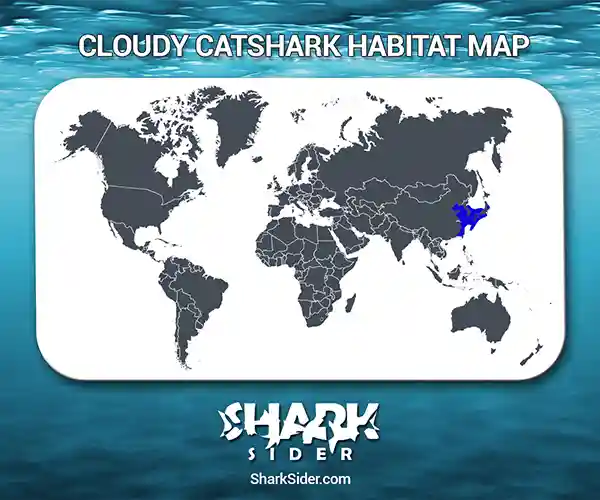The cloudy catshark is a bottom-dwelling catshark found in the northwestern Pacific.
Cloudy Catshark Scientific Classification |
|
| Kingdom | Animalia |
| Phylum | Chordata |
| Class | Chondrichthyes |
| Order | Carcharhiniformes |
| Family | Scyliorhinidae |
| Genus | Scyliorhinus |
| Scientific Name | S. torazame |
Description
This catshark is small, only around 20 inches long. The head is a sixth of the total body length and is 2/3rd as wide. Their snouts are rounded, the nostrils are covered with small skin flaps, and the oval eyes have crude nictitating membranes. They have five short gills and small teeth in both jaws.
The dorsal fins of the cloudy catshark are much lower down the body and the inner margins of the pelvic fins form a sort of ‘apron’ covering the genitalia.
Cloudy catsharks are brown dorsally and on the sides and yellow ventrally, with larger specimens having irregular dark and light spots.
Where do they live
Map Of The Cloudy Catshark’s Habitat

These catsharks swim in the northwestern Pacific, off the coasts of China, Japan, Korea, and the Philippines.
They are bottom dwellers living in rocky reefs at depths of 1,050 ft on the continental shelf and upper continental slope.
Behavior
Feeding
Their diet consists mainly of mollusks but will feed on bony fishes and crustaceans.
Reproductive
Before mating, the males bite the females in certain places like gills, sides, and the pectoral fin. They then wrap their bodies around their mate and copulate for 15 seconds to 4 minutes.
They are oviparous, laying two eggs inside smooth, vase-shaped yellow capsules. After 7-15 months, the eggs hatch, with 3.1-inch long newborns emerging. Sexual maturity is observed when they are 1-1.2 ft long and have a maximum lifespan of 12 years.
Adaptations
Their rough skin protects them against the blotchy swell shark predation, while their coloration offers effective camouflage.
Interactions with humans
These sharks are harmless to humans, and due to their docile nature, they are often kept in public aquaria. They are not a priority catch for commercial fisheries, with captured specimens discarded.
The IUCN lists the cloudy catshark as “Least Concern” or “LC” as, despite some pressure generated from fishing, there has been no risk of population decline.
